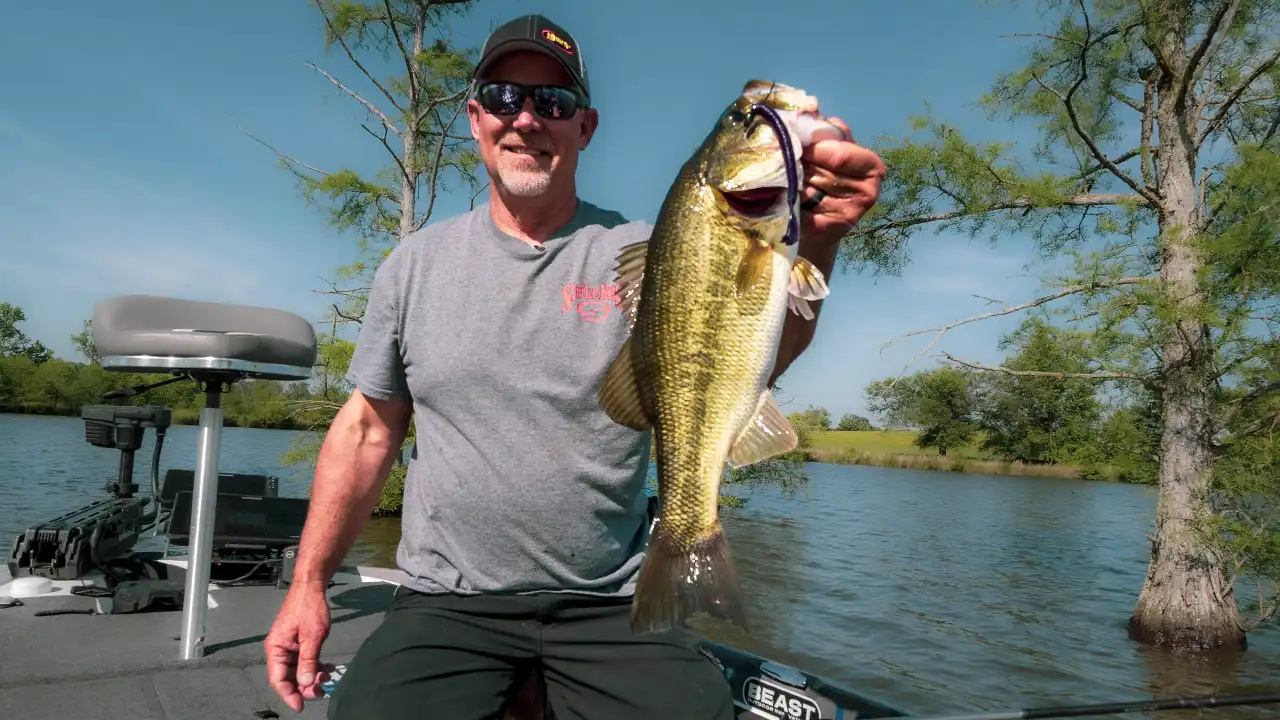Professional bass angler Scott Suggs delivers a comprehensive tutorial on flipping and pitching cypress trees. For many, strategically breaking down complex shallow water cover is becoming a lost art, yet it’s an essential bass fishing skill that demands time-on-the-water experience. Suggs does the work for us and shortens the learning curve so you, too, can go toe to toe with big bass in skinny water.
TACKLE LISTING (retail links)
- PLASTIC – Strike King Rage Twin Tail Menace Worm, color – June Bug: Buy at Bass Pro Shops | Buy at Tackle Warehouse
- HOOK – Straight Shank Hook, 5/0: Hooks at Bass Pro Shops | Hooks at Tackle Warehouse
- WEIGHT – Epic Baits Tungsten Worm Weight, 5/16-ounce: Buy at Tackle Warehouse
- ROD – Lew’s Team Signature Series Casting Rod, 7’6” Heavy Fast (Greg Hackney – Pitching): Buy at Bass Pro Shops | Buy at FishUSA
- REEL – Lew’s Custom Pro SLP Casting Reel, 8.3:1: Buy at Tackle Warehouse
- LINE – Strike King Contra Fluorocarbon Fishing Line, 17-pound: Buy at Tackle Warehouse
UNDERSTANDING CYPRESS TERRAIN
Cypress trees are a unique cover type widely distributed in wet, swampy areas along the Atlantic Coastal Plain and along the lower Gulf Coast. In addition to a prominent trunk, cypress trees also feature an extensive root structure. The tree is a refuge for fish and an excellent opportunity for anglers to sharpen their flipping and pitching skills. The structure and the shaded areas around these trees create perfect hiding spots for bass, making them ideal targets for flipping techniques. Suggs elaborates on the significance of accurate casting and how he fishes plastics around and over submerged tree roots.
OPTIMAL GEAR AND TECHNIQUES
Suggs prefers a streamlined Texas rig worm when pitching to cypress trees. His choice is strategic; the straight design of a worm comes through and over underwater obstacles more smoothly than a plastic with a bunch of appendages while still providing enough action to be noticeable. Suggs uses a light 5/16 ounce weight, heavy enough to ensure the worm reaches the desired depth quickly but sufficiently light to drag naturally through cypress knees. Suggs details his rod setup and highlights why a fast 8.3:1 reel is ideal when setting the hook and fighting bass in this environment.
LOCATING PRIME SPOTS
Not all trees offer the same potential. Suggs points out that isolated trees, particularly those with abundant cypress knees (the root structures common around such trees), are gold mines for bass anglers. Depth, too, can be an essential factor. Suggs has found that isolated trees often hold the biggest bass. While not required, forward-facing sonar can help you identify the location and complexity of cypress knees, which act like natural brush piles attracting fish.
TACTICAL APPROACHES FOR SUCCESS
The approach to fishing around cypress trees is as much about strategy as it is about skill. Suggs emphasizes the importance of stealth and patience, suggesting that anglers take their time to explore these areas thoroughly. Making 5- to 10 pitches around a single tree and knee complex is common! Whether you’re a novice angler or a seasoned pro, this video on cypress tree fishing will ensure you’re well-equipped for your next shallow-water mission.












